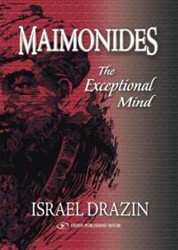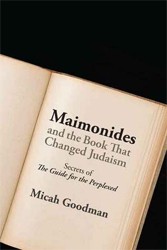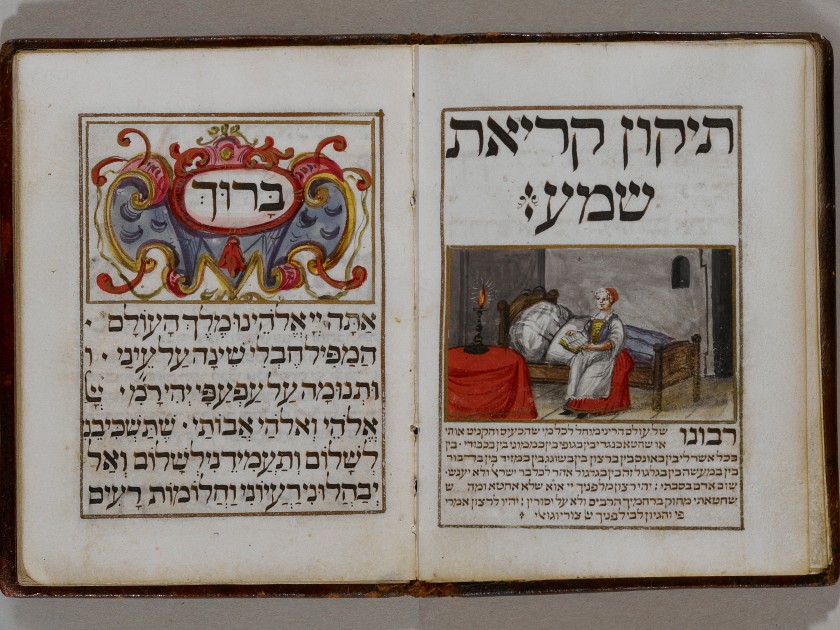
Seder Birkat ha-Mazon (Grace after Meals). Scribe and artist: Aaron Wolff Herlingen of Gewitch. Vienna, 1724. Courtesy of The JTS Library.
In the stately exhibition hall of New York City’s Grolier Club, you’ll find a Bible from Toledo, finished by its scribe, Abraham Khalif, a mere four months before the Jews were expelled from Spain in 1492. The book made its way to Constantinople, where five years later a second scribe, Hayyim ibn Hayyim, completed the text’s Masoretic annotations. A testament to diasporic endurance, it’s one of the many remarkable artifacts in Jewish Worlds Illuminated: A Treasury of Hebrew Manuscripts from the JTS Library.
The exhibit boasts over a hundred objects from the library of the Jewish Theological Seminary, whose holdings of Hebrew books and manuscripts is one of the largest in the world — but whose exhibition space in uptown New York City is limited to a few vitrines. The Grolier show is the largest exhibition ever of the JTS’s collection, spanning some 800 years of Jewish history. And the artifacts on display — chief among them prayer books, ketubot, Esther scrolls, and haggadot—testify to the ways diasporic art absorbed its region’s culture and motifs. Hence the title Jewish Worlds—plural.
The show is organized geographically, not chronologically, but you might as well start, as you would in Hebrew, with the first case at right, which contains the oldest artifacts. They’re from the Cairo Genizah, a cache of 400,000 fragments that has been central to scholarship on secular as well as religious life. On display here are a fragment of a ketubah almost 900 years old, an alphabet primer requiring students to trace the letters, a personal letter from a trader to his wife that continues diagonally in the margins after running out of room — letters from Judah Halevi also make the most of the page — and two letters from Maimonides, one resolving a dispute between a mohel and a doctor who performed a circumcision for free. (Maimonides sided with the mohel.)
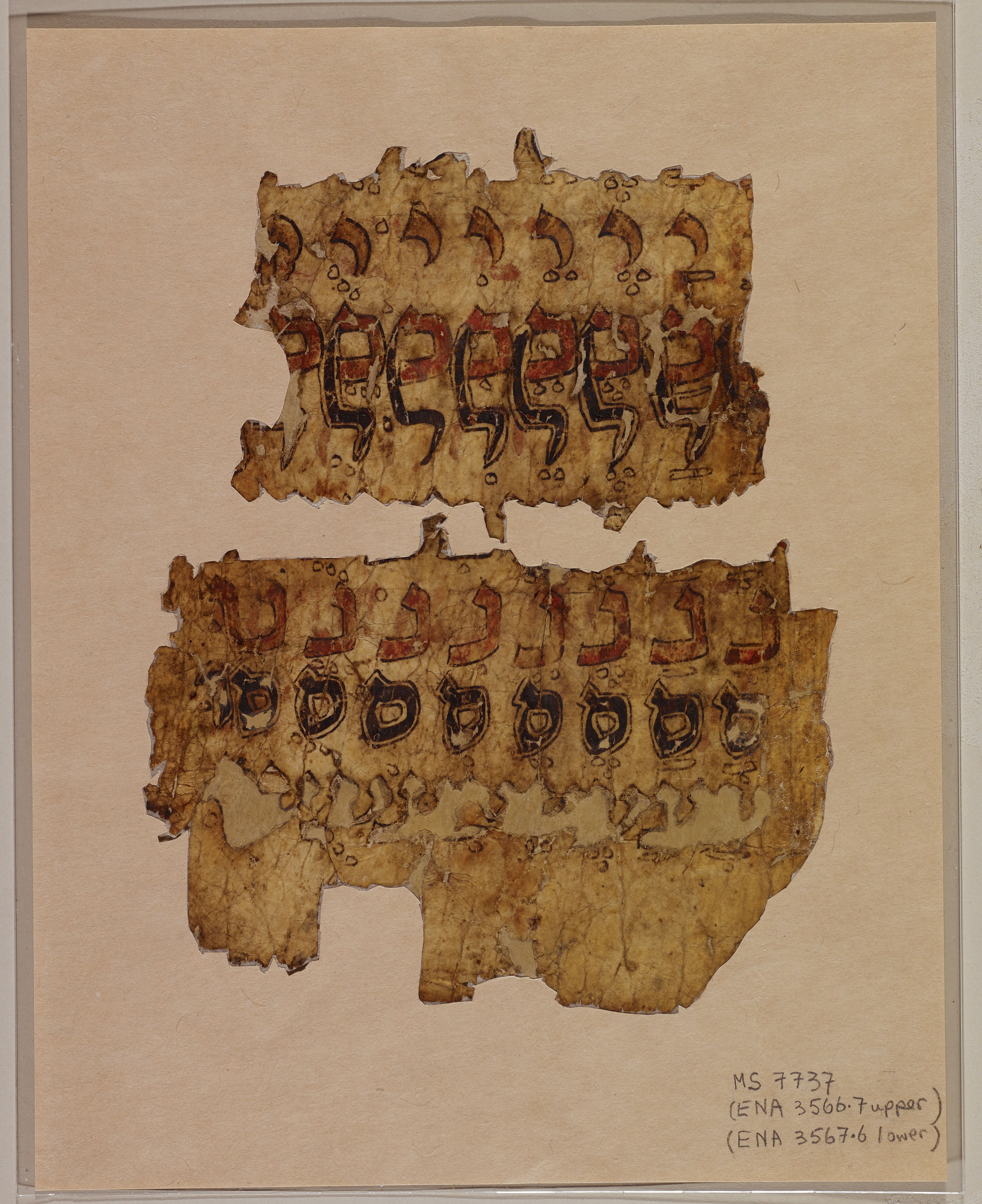
Primer. Egypt, 11th century. Courtesy of The JTS Library.
From there you might cross the gallery to Spain, and the famous and unfinished Prato Haggadah (c. 1300), open to a colorful depiction of the wise son in a scholar’s robe and hood, on a page enhanced with gold leaf and bordered by a serpent-like dragon. There be dragons in many of these works — along with human figures, disproving the old canard that Jewish art was aniconic. Still, the female nudes in the Italian works are surprising and include a large image of a nude woman on an eighteenth century Esther scroll, and a ketubbah from Mantua illustrated with some of the Bible’s racier scenes — many of them extramarital, and in which women are the seducers. Even more astonishing is the contract’s depiction of an anthropomorphized God, as one would see in Christian art.
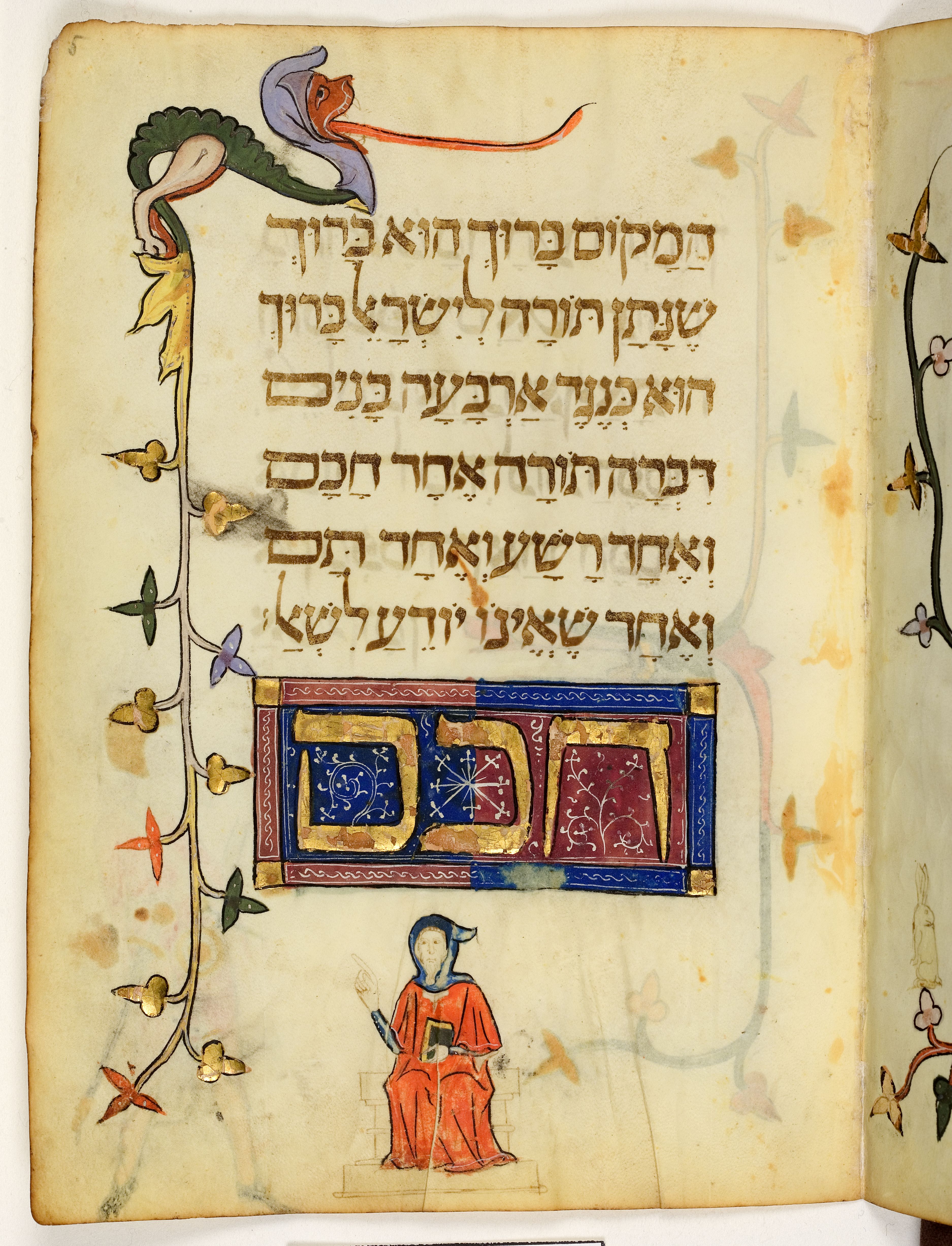
Prato Haggadah. Spain, ca. 1300. MS 9478. Courtesy of The JTS Library.
An Alsatian edition of the Song of Songs is illustrated with the scene in Kings in which Solomon threatens to cut a child of disputed maternity in two, a soldier’s sword poised above the baby. A haggadah from Italy by German artist Joel ben Simeon — the rare haggadah where the artist is known — depicts faces in little squares, like postage stamps, surrounding the first word of the Hebrew for “Let all who are hungry come and eat.” If you examine the border of a small eighteenth century Esther scroll from Ancona, Italy, you’ll see that its peacocks, goats, and foliage have been demarcated by papercuts, an ancient Chinese technique taken up by artisans in Ancona and Lugo a century earlier. And in a Sefer Evronot, or Book of Intercalculations, from Germany, spinning dials used to calculate the Jewish calendar are accompanied by an illustration of, of all things, an elephant — a visual pun for those who know the Hebrew word for elephant (“pil”).
On the other side of the gallery, the influence of Islam is seen not just in architectural arches but in iconography, story, and materials. A ketubah is adorned with Persia’s national symbols, the lion and sun — although the suns bear a remarkable resemblance to Coney Island’s grinning mascot. An edition of the Ardashir-nama (the Book of Ardashir, or Ahasuerus), a fourteenth century epic poem by the Jewish poet Shahin, extends the Book of Esther in the manner of a Persian epic, telling the story of Arashir and Vashti’s son Shiru, who falls in love with a Chinese princess. And “carpet pages” from Yemen, section dividers for a Bible, use tiny lettering to construct geometric patterns. Micrography is employed in books on both sides of the aisle as well as in the middle, where a medieval Bible from Germany is open to the Book of Job, the first word framed by a micrographic annotation in the shape of a hunting scene.
In this center vitrine you’ll also find one of the most celebrated treasures in the exhibition: the first volume of the Esslingen Mahzor (the other is in Amsterdam), a massive thirteenth century Gothic wonder, open to the service for the first day of Rosh Hashanah. It’s moving to stand in front of it, as the cantor would have — the congregation behind him, with a view of the key words — and marvel at the perseverance of tradition, over eight hundred new years later.
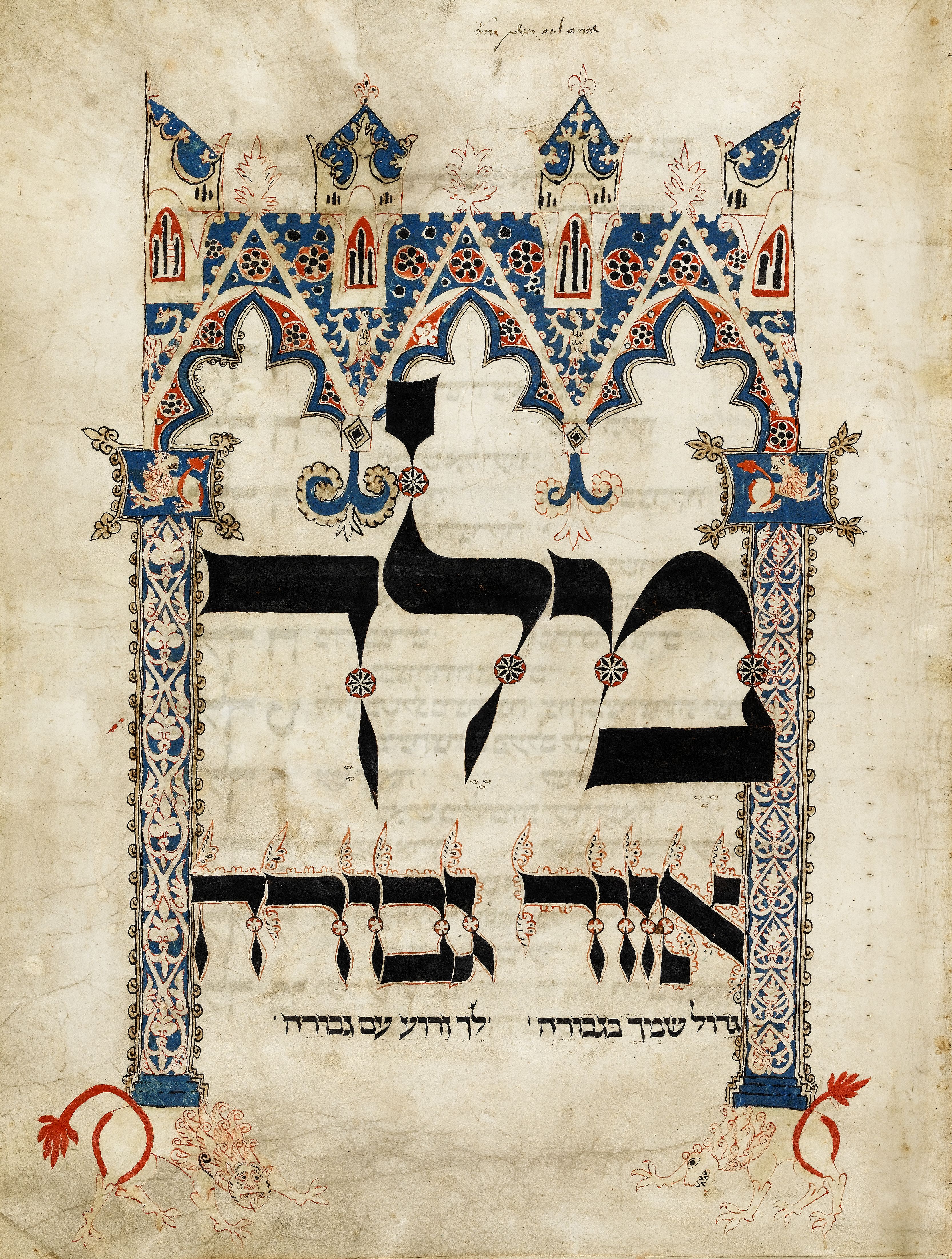
Esslingen Mahzor. Germany, 1290. Scribe: Kalonymus ben Judah. Courtesy of The JTS Library.
Jewish Worlds Illuminated: A Treasury of Hebrew Manuscripts from The JTS Library runs through December 27, 2025 at The Grolier Club, 47 East 60th Street, New York, NY For hours and select Sunday openings visit www.grolierclub.org
Below are two additional pieces that are on display in the exhibit.
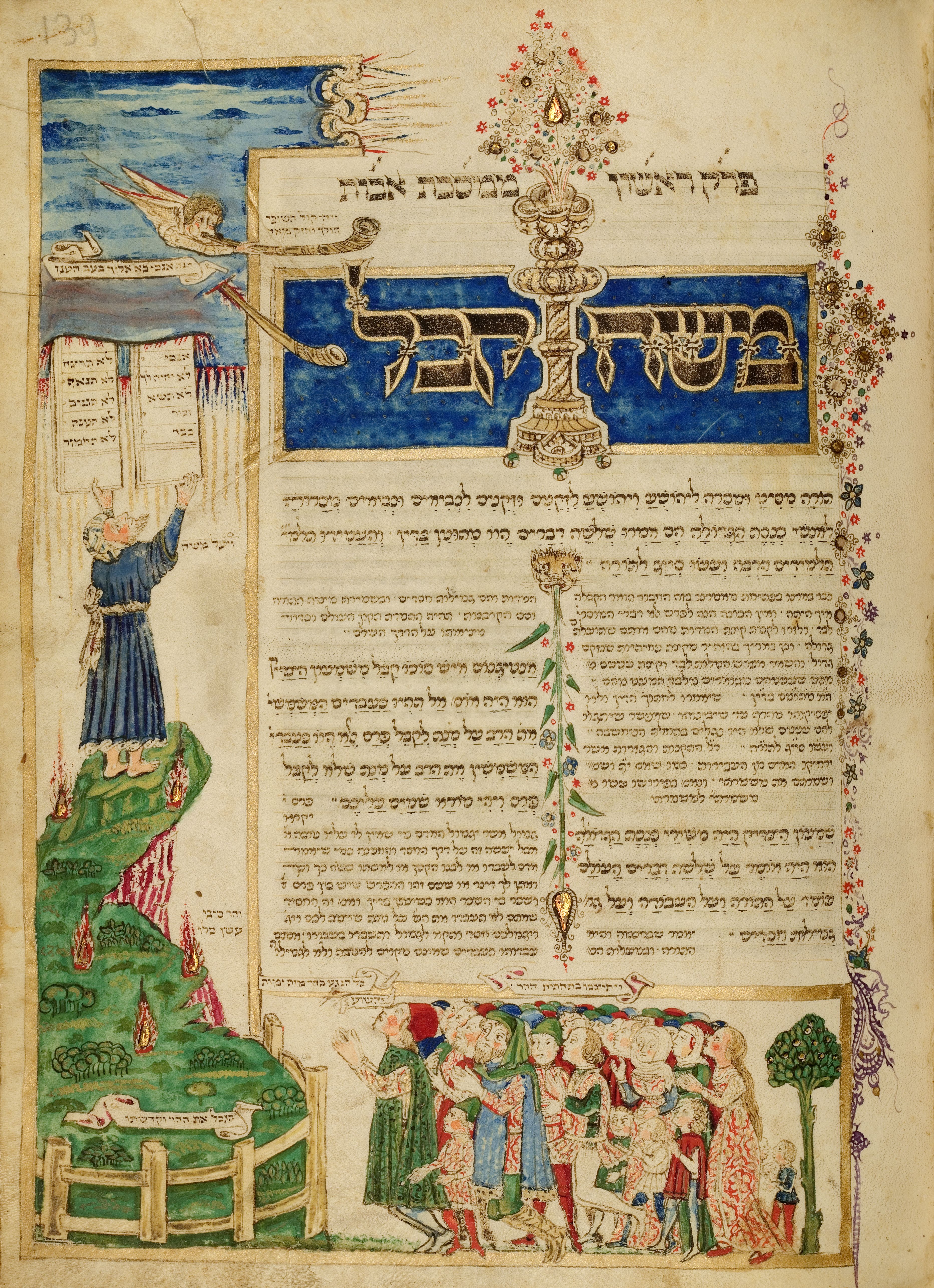
Rothschild Mahzor. Florence, Italy, 1490. MS 8892. Folio 139r – Moses receiving the Tablets of the Law, opening of Pirkei Avot (Ethics of our Fathers). Courtesy of The JTS Library.
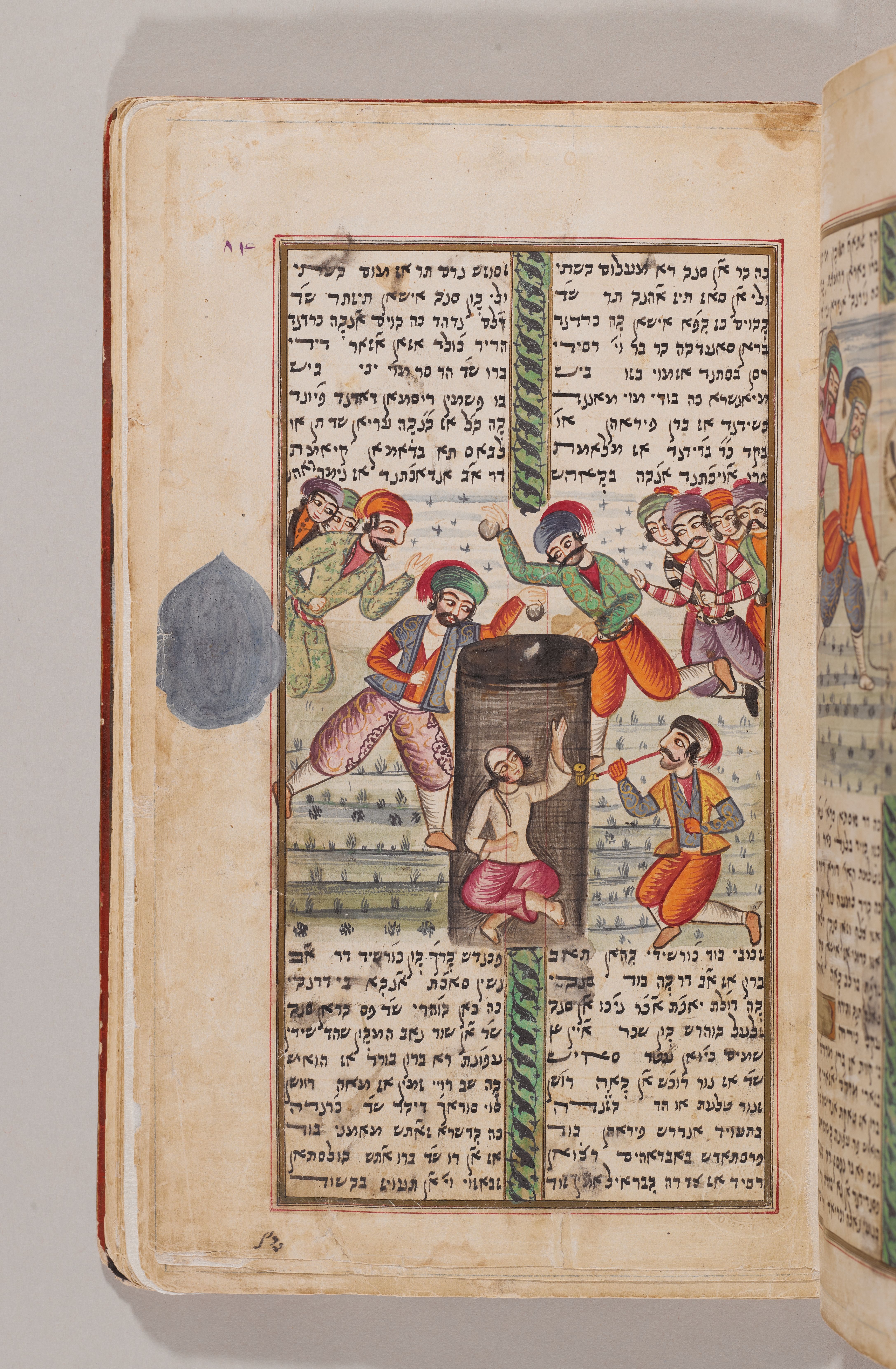
Yusuf and Zulaykha. Abd al-Rahman Jami. Scribe: Eliyahu ben Nissan ben Eliyah. Iran, 1853. Courtesy of The JTS Library.
Ann Lewinson is the author of Still Life with Meredith (Outpost19) and has most recently written for ARTnews, cléo, The Evergreen Review, Hell Gate, The Observer, The Rumpus, Screen Slate and Symphony.

